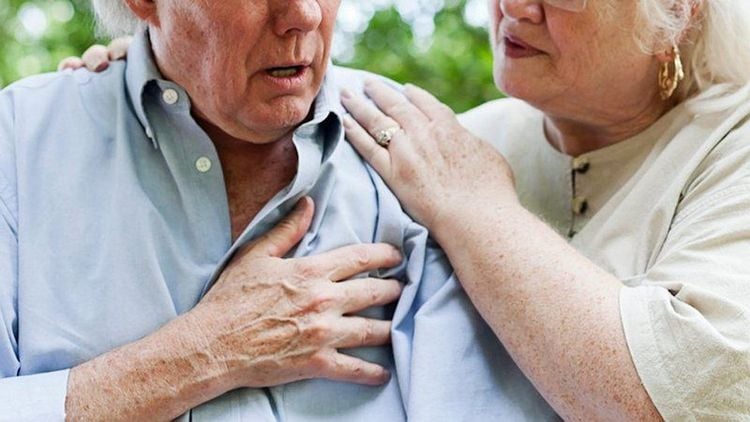This is an automatically translated article.
The article is professionally consulted by Master, Doctor Tran Hong Nhat - Interventional Cardiologist - Cardiovascular Center - Vinmec Central Park International General Hospital. The doctor has more than 10 years of experience in examining and treating interventional cardiovascular diseases.Syncope is a common phenomenon, caused not only by cardiovascular disease but also by other causes such as neurological reflexes or hypotension.
1. What is syncope?
Syncope is a temporary loss of consciousness due to hypoperfusion of the brain, with features that are sudden, do not last long, and fully resolve spontaneously.2. Causes of fainting
2.1. Cardiovascular syncope
Syncope is caused by cardiovascular diseases that reduce cardiac output suddenly causing cerebral ischemia.Common diseases:
Due to arrhythmia: the heart rate is too slow or too fast. Due to heart diseases: aortic valve stenosis, left atrial mucinous tumor, hypertrophic cardiomyopathy...

2.2. Neurogenic syncope
With this cause syncope can occur even in healthy people and it is often repeatedMechanisms cause collapse due to:
Nervous reflex occurs after defecation, urination, coughing, after eating , breath holding, heavy lifting, carotid sinus pressure Endogenous psychomotor irritation due to affective disorder, panic disorder.
2.3. Syncope due to postural hypotension
The disease occurs suddenly when the patient is sitting or lying down and gets up quite quickly or stands for too long.Caused by:
Use of vasodilators Decreased circulatory volume Autonomic neuropathy (diabetes, Parkinson's, amyloidosis ...) With this type of syncope, standing up or sitting down needs to be careful and especially should not stand for a long time in an immobile state, accompanied by daily exercise is the best preventive therapy.

3. Conditions distinguishing from syncope
Trauma Acute blood loss Hypoglycemia Ecstasy or alcohol Stroke Seizure transient ischemic attack Sleep disturbances, such as somnolence and narcolepsy Anxiety and hyperventilation syndromes, somatic disorders4. How to diagnose syncope
4.1 Diagnosis of neurological syncope
No heart disease Long-term history of recurrent fainting After sudden unusual vision, smell, taste or pain After vomiting, vomiting While eating or after eating Turning head or pressing on carotid sinus.
4.2 Diagnosis of syncope due to orthostatic hypotension
After standing Temporarily associated with starting dose of antihypertensives Standing for long periods of time, especially in crowded places, in extremely hot places Autonomic neuropathy or Parkinson's disease Standing for long periods of time after exertion.
4.3 Diagnosis of cardiovascular syncope
Presence of obvious structural heart disease Family history or sudden death or cell channel disease Occurs with exertion or lying down Sudden onset of palpitations at the time of syncope Electrocardiogram suggests. In summary, the diagnosis of syncope requires careful assessment of the circumstances of its occurrence, taking medical history, drug treatment history, and performing evaluation tests such as electrocardiogram, electrocardiogram holter, echocardiogram, and compression testing. carotid sinus, tilt table testPlease dial HOTLINE for more information or register for an appointment HERE. Download MyVinmec app to make appointments faster and to manage your bookings easily.














